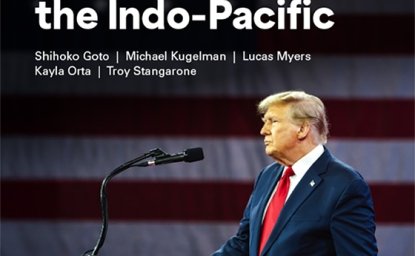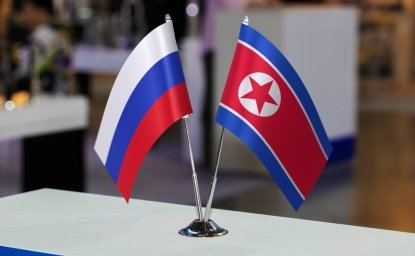Policy Recommendations
The United States and the Republic of Korea are aligned in their core values and interests— but not always in their policies. With the start of a new administration in Seoul, there is an opportunity for the United States and ROK to more closely align their policies on supply chains for critical technologies. This article recommends four main lines of effort by the two governments to enhance policy coordination in this area:
- Align incentives for R&D and investment in critical technologies.
- Align cybersecurity, export control, investment screening, and other defensive policies to protect supply chains for critical technologies.
- Jointly promote an affirmative agenda to advance preferred global technology standards and digital rules.
- Take advantage of new and existing bilateral and plurilateral forums to coordinate the policies above.
The Logic of Cooperation
The United States and ROK have a compelling interest in working together to promote and protect critical technologies and make their supply chains more resilient. Among other reasons for this:
- They have complementary capabilities. In semiconductors, for example, Korean companies produce around 70% of the world’s memory chips, while the United States is the global leader in advanced chip design. There are also many potential synergies from joint development of batteries, electric vehicles (EVs), and other clean energy technologies.
- They face shared vulnerabilities, whether from cyberattacks, transfer of sensitive technologies to adversaries, unreliable access to critical materials, and an array of potential disruptions—natural and human-made—to supply chains.
- As allies and advanced market democracies, they have shared values and preferences with regard to global standards, rules, and norms.
- There are numerous risks associated with NOT coordinating, from gaps in mutual security to redundant investments and overcapacity.
In recent high-level interactions, Washington and Seoul have recognized the potential benefits of closer cooperation in the technology arena. The joint statement released by President Biden and President Moon after their summit in May 2021 included an extensive section calling for a strengthened partnership to promote and protect critical technologies such as semiconductors, EV batteries, biotechnology, and telecommunications. 1.In his congratulatory call to president-elect Yoon Suk-yeol on March 9, 2022, President Biden said he looked forward to cooperating with his new counterpart on supply chains and other key global challenges. 2
From Words to Practice
The challenge now will be to put shared recognition of the potential benefits of greater cooperation into practice through tangible action by the two governments, individually and in concert. Three lines of effort stand out as priorities.
First, Washington and Seoul should coordinate their efforts to increase funding and policy support for R&D and investment in critical technologies. In semiconductors, the foundational technology of today’s digital economy, each country has taken steps to sustain its leadership in chip development and production. Through its “K-Semiconductor Belt” strategy, for example, the Moon administration, in May 2021, announced substantial tax credits for semiconductor R&D and investment.3 For its part, the Biden administration made semiconductors a focus of its 100-day supply chain review in early 2021, promising an array of policies to bolster the industry.4 Meanwhile, the so-called CHIPS Act authorizing $52 billion to support chip investment and R&D continues to wend its way through the US Congress.5
The challenge is to coordinate efforts like these to ensure reliable and secure supplies of semiconductors over the short and long term, not only for the United States and ROK but also for key allies and partners. As the Information Technology and Information Foundation (ITIF) said in a 2020 report, chip production is a complex and expensive undertaking that no single country can manage alone.6 Coordination among key players such as the United States and ROK will be necessary not only to enhance supply chain resilience but also to avoid redundancy of investment and overcapacity.
Second, Washington and Seoul should further align their defensive policies to ensure that sensitive technologies do not get into the wrong hands. This means, among other things, strengthening cybersecurity measures and tightening export-control and investment-screening programs. Regarding the latter set of policies, the United States has implemented substantial reforms in the past few years through the new FIRRMA7 and ECRA8 legislation, and Washington is now considering a controversial new outbound investment screening process.9 As suggested in the Biden-Moon joint statement of May 2021, there are expectations in Washington that Seoul will tighten its own laws and procedures in these areas.
Third, the United States and ROK should work together to push an affirmative agenda of global standard-setting and rule-making in the technology arena. There is fierce competition under way among advanced and large emerging countries to set the standards and rules that will govern global economic activity over the coming decades, and it is critical for both the competitiveness and national security of the United States and ROK that they work together to advance their preferred approaches. This means, for example, working together in the International Telecommunications Union to push back against notions of “internet sovereignty” advanced by China and Russia.10 It also means working through regional trade arrangements such as APEC, the Digital Economy Partnership Agreement (DEPA), and the Comprehensive and Progressive Agreement for Trans-Pacific Partnership (CPTPP) to advanced US– ROK–preferred digital rules and norms. The United States and ROK cannot just play defense on these issues; they must offer an affirmative agenda for global technology governance.
Managing Areas of Tension
Better coordination of technology policies between Washington and Seoul involves not only promoting shared approaches but also managing differences. The United States and ROK are allies and economic partners, but they also have economic and foreign policy interests that do not always perfectively align. For one thing, each country has a legitimate interest in promoting growth and jobs in its own domestic economy. Policies to promote “onshoring” of technology production—such as the Biden administration’s proposal to offer larger incentives for EVs11 produced with higher US content and confirming to US labor standards—could work against allied cooperation.
Moreover, US and Korean companies compete with each other in global markets, and there are limits to how far they will be willing to collaborate. Recent reports of tensions between US automakers and Korean battery suppliers over transfers of trade secrets is just one example of the practical challenges of technology cooperation, even between these two close allies.
Finally, Washington and Seoul will need to acknowledge and work around the different realities of their respective relationships with China. Over 30% of the ROK’s exports go to China, and Korean companies continue to invest heavily in the Chinese market, including in key technology sectors such as semiconductors. Although president-elect Yoon has signaled a willingness to take a more hawkish line on China, there may be limits to how far the new government in Seoul is willing to go in supporting Washington’s efforts to reduce technological interdependence with China.
Mechanisms for Coordination
Addressing these tensions forthrightly, as well as maximizing the opportunities for constructive collaboration, will require appropriate mechanisms of coordination between Washington and Seoul. Both bilateral and plurilateral forums will be needed.
There has been much discussion about whether Korea will—or should—join the United States, Japan, Australia, and India in the Quadrilateral Security Forum, or Quad.13 To be sure, there is a certain logic to the notion of including the ROK in the Quad’s new work on critical technologies. However, maritime security remains the dominant unifying theme of the Quad, and it is unclear how much real scope there is for cooperation in the technology arena within such a diverse group.
What may make more sense is for the United States and ROK to align in a “variable geometry” of plurilateral groupings that bring together countries that are more naturally complementary on key technologies.14 For example, a new semiconductor grouping might include the United States, Korea, Japan, Taiwan, the Netherlands, and other key players in chip supply chains. Slightly different configurations of countries would make sense on other critical technologies such as batteries, 5G, and biotechnology.
Korea’s participation in the Biden administration’s forthcoming Indo-Pacific Economic Framework (IPEF) would provide another mechanism for Washington and Seoul to coordinate on digital governance and technology supply chain issues, two central topics on the IPEF agenda.15 Ideally, the work in IPEF would eventually result in both the United States and ROK becoming members of formal regional trade agreements such as DEPA and CPTPP—although Seoul should move ahead with joining both groups even if Washington continues to dither.
Finally, the Biden and incoming Yoon administrations should consider establishing a new bilateral forum to coordinate all the policies and activities discussed above. This could be modeled after the new “Economic 2+2” arrangement between US and Japanese ministers of commerce and foreign affairs.16
Conclusion/Policy Implications
The start of the Yoon administration gives the United States and ROK a chance to reset their relationship across many domains. Given the stakes for both countries’ economic competitiveness and national security, no area is more in need of better US–ROK cooperation than critical technologies. The Biden and Yoon administrations should move quickly to establish new mechanisms of coordination of their technology policies, encompassing both defensive (protection) and offensive (promotion) measures, as well as steps to manage their inevitable differences of approach.
References
1. White House, “U.S.-ROK Leaders’ Joint Statement,” May 21, 2022, https://www.whitehouse.gov/briefingroom/statements-releases/2021/05/21/u-s-rok-leadersjoint-statement/.
2. White House, “Readout of Joseph R. Biden, Jr.’s Call with President-Elect Yoon Suk-yeol of the Republic of Korea,” March 9, 2022. https://www.whitehouse. gov/briefing-room/statements-releases/2022/03/09/ readout-of-joseph-r-biden-jr-s-call-with-president-electyoon-suk-yeol-of-the-republic-of-korea/.
3. KBS World, “‘K-Semiconductor Belt Strategy’ to Establish the World’s Largest Supply Network by 2030,” http://world.kbs.co.kr/service/contents_view. htm?board_seq=403357.
4. White House, “Fact Sheet: Biden–Harris Administration Announces Supply Chain Disruptions Task Force to Address Short-Term Supply Chain Discontinuities,” June 8, 2021, https://www.whitehouse.gov/briefing-room/ statements-releases/2021/06/08/fact-sheet-bidenharris-administration-announces-supply-chaindisruptions-task-force-to-address-short-term-supplychain-discontinuities/.
5. Yifan Yu, “U.S. Chipmakers Push for CHIPS Act Funding to Close Gap with Asia,” Nikkei Asia, March 24, 2022, https://asia.nikkei.com/Business/Tech/ Semiconductors/U.S.-chipmakers-push-for-CHIPS-Actfunding-to-close-gap-with-Asia.
6. Stephen Ezell, “An Allied Approach to Semiconductor Leadership,” Information Technology and Innovation Foundation (ITIF), September 2020, https://itif. org/publications/2020/09/17/allied-approachsemiconductor-leadership.
7. U.S. Department of the Treasury, “CFIUS Laws and Guidance,” https://home.treasury.gov/policy-issues/ international/the-committee-on-foreign-investment-inthe-united-states-cfius/cfius-laws-and-guidance.
8. U.S. Congress, “H.R.5040 - Export Control Reform Act of 2018” https://www.congress.gov/bill/115thcongress/house-bill/5040.
9. Chase D. Kaniecki and Pete Young, “Support for ‘Reverse CFIUS’ Outbound Investment Screening Regime Grows,” March 31, 2022, https://www. clearytradewatch.com/2022/03/support-for-reversecfius-outbound-investment-screening-regime-grows/.
10. Luca Bertuzzi, “China, Russia Prepare New Push for State-controlled Internet,” EURACTIV, February 28, 2022 https://www.euractiv.com/section/digital/news/ china-russia-prepare-new-push-for-state-controlledinternet/.
11. U.S. Department of Energy, “Fact Sheet: Biden-Harris Administration 100-Day Battery Supply Chain Review,” June 8, 2021, https://www.energy.gov/articles/factsheet-biden-harris-administration-100-day-batterysupply-chain-review.
12. Kotaro Hosokawa, “South Korea-U.S. EV Battery Alliances Spark Discord,” Nikkei Asia, March 25, 2022, https://asia.nikkei.com/Business/Automobiles/SouthKorea-U.S.-EV-battery-alliances-spark-discord.
13. “S.Korea Denies Reports That Yoon Asked to Attend Quad Summit in Japan,” U.S. News, April 13, 2022, https://www.usnews.com/news/world/articles/2022- 04-13/s-korea-denies-report-yoon-asked-to-go-to-quadmeeting-in-japan.
14. Matthew P. Goodman and Brooke Roberts, “Toward a T12: Putting Allied Technology Cooperation into Practice,” Center for Strategic and International Studies (CSIS), October 2021, https://www.csis. org/analysis/toward-t12-putting-allied-technologycooperation-practice.
15. Matthew P. Goodman and Aidan Arasasingham, “Regional Perspectives on the Indo-Pacific Economic Framework, Center for Strategic and International Studies (CSIS), April 2022, https://www.csis.org/ analysis/regional-perspectives-indo-pacific-economicframework.
16. Noriyuki Suzuki and Miya Tanaka, “Japan, U.S. Agree to Launch Economic Dialogue, Align on China, Russia,” Kyodo News, January 22, 2022, https:// english.kyodonews.net/news/2022/01/96fc2820e7beurgent-japan-us-eye-launch-of-ministerial-talks-oneconomy.html.
Author


Hyundai Motor-Korea Foundation Center for Korean History and Public Policy
The Center for Korean History and Public Policy was established in 2015 with the generous support of the Hyundai Motor Company and the Korea Foundation to provide a coherent, long-term platform for improving historical understanding of Korea and informing the public policy debate on the Korean peninsula in the United States and beyond. Read more


Indo-Pacific Program
The Indo-Pacific Program promotes policy debate and intellectual discussions on US interests in the Asia-Pacific as well as political, economic, security, and social issues relating to the world’s most populous and economically dynamic region. Read more

Explore More
Browse Insights & Analysis
Hitting the Reset Button in the Indo-Pacific



